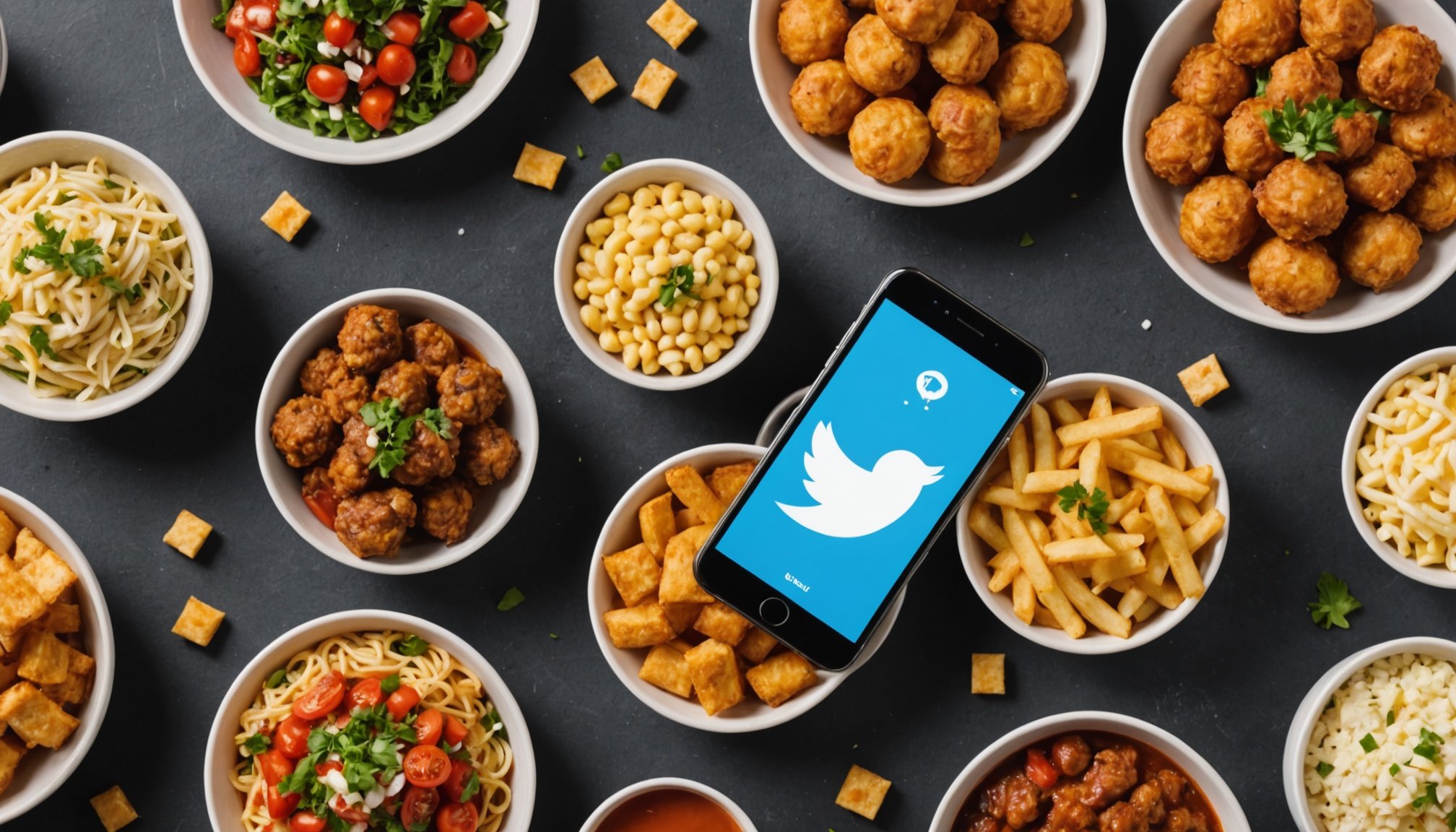Understanding User-Generated Content
User-Generated Content (UGC) encompasses various forms of media created by individuals rather than by brands themselves. Typically found in social media posts, reviews, or blog entries, UGC proves invaluable in today’s digital marketing landscape. Its significance is underscored for brands aiming to establish authentic connections with their audience.
Consider the food delivery sector, where engaging visuals of user-shared meals or delivery experiences serve as prime examples of UGC. This form of content not only showcases genuine customer reactions but also aids in crafting relatable marketing narratives.
Also to see : Unlocking Pinterest: The Essential Guide for UK Candle Makers to Showcase Unique DIY Craft Inspirations
Marketing Insights from brands successfully leveraging UGC highlight a series of distinct benefits:
- It fosters an enhanced level of authenticity and trust in brand-consumer relationships.
- Facilitates innovative engagement strategies by motivating consumers to actively participate in brand dialogues.
- Provides cost-effective content creation solutions, leveraging the audience as powerful creators.
Many brands harness UGC to elevate customer engagement, tapping into the natural inclination of users to share personal experiences. By thoughtfully integrating UGC into their marketing mix, brands can stimulate vibrant digital communities, enhance credibility, and drive significant interaction with potential and existing customers. Emphasising this reciprocal relationship encourages more profound marketing insights and allows the brand narrative to grow organically alongside community contributions.
Tools and Technologies for Managing User-Generated Content
Managing User-Generated Content (UGC) effectively can revolutionise a brand’s marketing content strategy. To navigate this intricate landscape, brands have embraced specialised content management tools. These tools help efficiently source, organise, and showcase UGC, serving as the bedrock for curating meaningful brand narratives.
Firstly, UGC platforms like TINT and Stackla allow brands to aggregate and manage content from diverse social media channels, adding value by providing a streamlined approach to content curation. These tools play a pivotal role in saving time while ensuring only the most impactful content is showcased.
Moreover, integrating social media monitoring solutions like Hootsuite or Sprout Social enhances audience engagement. These platforms track and monitor brand mentions, effectively capturing real-time user interactions that can be woven into marketing campaigns. This constant surveillance allows brands to engage promptly, thereby bolstering their authenticity and responsiveness.
Finally, when incorporating UGC into existing marketing frameworks, consider the alignment of chosen content with overarching brand promotion goals. By closely matching user posts with brand values, campaigns gain cohesiveness, creating a community-centric approach that customers can relate to and engage with. This thoughtful alignment encourages users to contribute content that resonates deeply with both the audience and the brand.
Twitter as a Platform for Food Delivery Brands
Twitter Marketing for food delivery brands in the UK offers a unique blend of real-time customer interaction and expanded brand visibility. With its fast-paced environment, Twitter allows businesses to engage directly with consumers, addressing their queries and feedback promptly, enhancing the brand’s presence. This immediacy is vital for food delivery services, as it can significantly impact customer satisfaction and loyalty.
The platform’s user demographics in the UK are diverse, providing opportunities to target varied audience segments. Successful social media strategy on Twitter includes crafting engaging tweets that resonate with these demographics. Incorporating hashtags and live event promotions can amplify reach and foster engagement.
Notable successful campaigns involve brands utilising witty banter, timely responses, and engaging in trending topics. Engaging content often includes multimedia elements like video snippets showcasing deliveries or customer experiences, enhancing relatability and response rates.
Food delivery campaigns benefit from Twitter’s analytics to monitor tweet performance and user interactions. By analysing these metrics, brands can refine their strategies, ensuring content remains engaging and aligned with consumer preferences. This strategic approach can turn Twitter into a robust tool for dynamic customer interaction and brand cultivation in the ever-evolving food delivery sector.
Crafting an Effective User-Generated Content Strategy
Building a robust Content Strategy around User-Generated Content (UGC) involves setting clear goals, engaging the audience, and ethically showcasing user contributions. Each step is crucial for leveraging UGC to its fullest potential.
Setting Clear Goals
Define clear objectives for incorporating UGC, ensuring they align with your brand promotion goals. Audience engagement goals should be tailored to what resonates with your target market, reflecting the brand’s messaging and values. For example, if your objective is to enhance customer trust, focus on showcasing genuine customer stories and experiences that highlight brand authenticity.
Encouraging User Participation
To encourage participation, brands can use hashtags and contests. These strategies provide incentives for customers to share their experiences and engage with the brand. A well-crafted hashtag can unify a campaign, making it easily identifiable and shareable across platforms. Contests add a competitive, interactive element, inspiring users to contribute their content in hopes of winning a prize or gaining recognition.
Curating and Showcasing User-Generated Content
Select user content that best represents your brand and aligns with your goals. Highlight it through your marketing channels while adhering to ethical considerations, such as seeking permission and giving credit to the original creators. This not only respects user rights but also strengthens the brand’s integrity and trustworthiness.
Best Practices for Engaging Customers on Twitter
To effectively engage customers on Twitter, maintaining a consistent voice and brand image is crucial. This consistency reinforces the brand’s identity and ensures that all communication resonates with your audience. Craft each tweet to reflect the brand’s tone, whether it’s friendly, professional, or humorous.
Timely responses to user-generated content are equally important. Quick, attentive replies demonstrate that the brand values customer opinions and feedback. This interaction not only enhances customer satisfaction but also promotes the brand as responsive and caring.
- Respond Promptly: Engage in real-time with users sharing their experiences or issues. It cultivates a proactive relationship with your audience.
- Keep It Consistent: Establish a distinctive voice. Consistency builds trust and makes your brand easily recognisable.
Fostering community and loyalty through engagement strategies is another best practice. Encourage followers to participate in discussions or share experiences related to your brand. Use hashtags or pose questions to spark conversation. By bringing followers into the dialogue, you build a vibrant community that feels connected to your brand. This approach not only retains customers but also attracts new ones drawn to the active, engaging environment created.
Case Studies of Successful Campaigns
Exploring case studies in the realm of food delivery can offer compelling insights into effectively leveraging User-Generated Content (UGC). By examining success stories from notable UK brands, marketers can glean valuable lessons learned that can enhance their strategies.
Campaign Analysis
Several UK food delivery brands have successfully used UGC to bolster their marketing campaigns. These brands often showcase customer-shared photos of meals or delivery experiences, tapping into genuine scenarios that convey trust and authenticity. By analyzing these brand examples, one can identify essential elements, such as the integration of customer narratives which resonate deeply with the audience.
Lessons Learned
In these success stories, a recurring challenge is maintaining customer interest while ensuring ethical use of their content. Brands have found that aligning UGC with brand narratives and giving credit to content creators not only respects user rights but also enhances brand credibility.
Metrics for Success
Tracking key performance indicators is vital for determining the impact of UGC strategies. Metrics such as engagement rates, content reach, and user feedback are excellent indicators of success. Real-world data often highlights a notable increase in brand growth, attributed to the implementation of effective UGC tactics.






